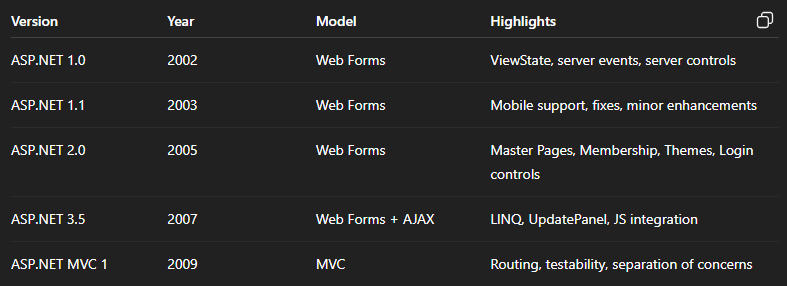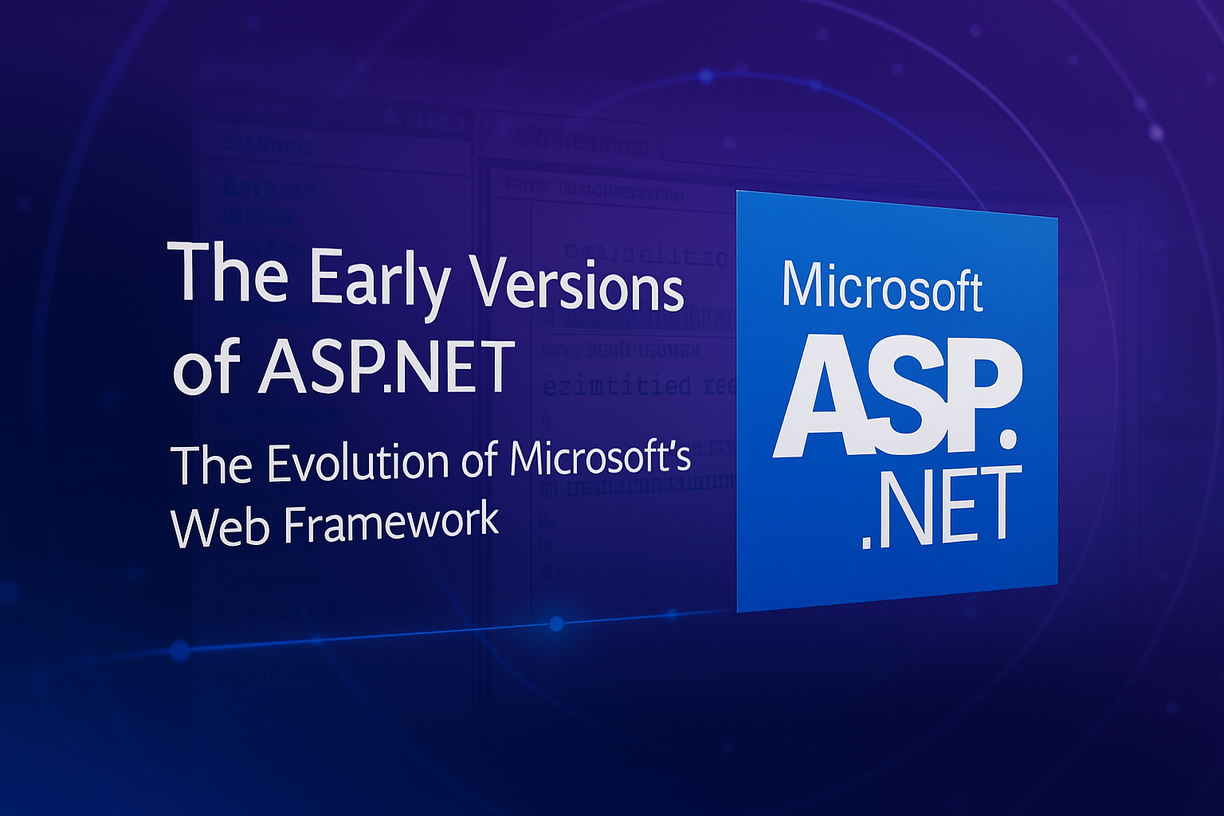Since the early 2000s, ASP.NET has been a cornerstone of web development within the Microsoft ecosystem. Designed as a successor to classic ASP (Active Server Pages), ASP.NET introduced a new event-driven, object-oriented programming model, tightly integrated with the brand-new .NET Framework.
In this article, we’ll explore the early versions of ASP.NET, their key features, development models, and how each version helped shape the foundation of the modern ASP.NET Core we use today.
🏁 ASP.NET 1.0 (2002)
Released with .NET Framework 1.0
ASP.NET 1.0 was the first official release of the framework and introduced the Web Forms model — inspired by desktop development (like WinForms) with event-driven controls and server-side rendering.
Key Features:
Web Forms with postbacks and ViewState
Code separation:
.aspxmarkup +.cscode-behindServer controls (
<asp:TextBox>,<asp:Button>, etc.)Full server lifecycle and event model
Built-in server-side validation
Characteristics:
Strongly tied to IIS (Internet Information Services)
High productivity for internal business apps
Limited control over generated HTML
🚀 ASP.NET 1.1 (2003)
Released with .NET Framework 1.1
A minor evolution focused on reliability and small enhancements.
Improvements:
Support for mobile controls
Performance and security updates
Better error handling and validation
🧱 ASP.NET 2.0 (2005)
📌 Released with .NET Framework 2.0
This was a major update, greatly improving developer productivity with new controls, layout systems, and security APIs.
What’s New:
Master Pages for layout reuse
Login controls (authentication components)
Web Parts for modular UI
Membership and Roles APIs for user management
SiteMap and navigation controls
Dynamic compilation of pages
Tools:
Visual Studio 2005 with enhanced drag-and-drop UI design
Better design-time support for server controls
⚙️ ASP.NET 3.5 (2007)
Released with .NET Framework 3.5
ASP.NET 3.5 embraced LINQ and brought native AJAX integration with UpdatePanel and ScriptManager.
Key Features:
Integration with LINQ to SQL
ListView and DataPager controls
AJAX support via ASP.NET AJAX Extensions
JSON serialization and lightweight web services (WCF/AJAX)
🌀 ASP.NET MVC 1.0 (2009)
While still under the ASP.NET umbrella, ASP.NET MVC marked the start of a new era of web development.
Why It Mattered:
Introduced true separation of concerns (MVC pattern)
Full control over generated HTML
Strong support for unit testing
SEO-friendly routing and clean URLs
🔄 Timeline Summary

🧭 What Came Next?
After the success of ASP.NET MVC, new components were introduced such as ASP.NET Web API, SignalR for real-time communication, and finally ASP.NET Core — a modern, lightweight, cross-platform reimagining of ASP.NET that unified MVC, Web API, and Razor Pages.
🧠 Key Takeaways from Early ASP.NET
Web Forms provided rapid development but lacked flexibility.
The MVC model introduced scalability and clean architecture.
Frontend/backend separation became inevitable.
ASP.NET’s evolution reflects the modernization of web development itself.
🤝 Connect with Me
If you work with modern .NET and want to master architecture, interoperability, or frameworks like ASP.NET Core and Blazor — let’s connect:
Final Thoughts
Classic ASP.NET shaped a generation of enterprise web applications, intranets, and public systems. Understanding its origins is key to appreciating the architectural decisions and innovations that led to the modern ASP.NET Core — a fast, modular, and cross-platform web framework.



